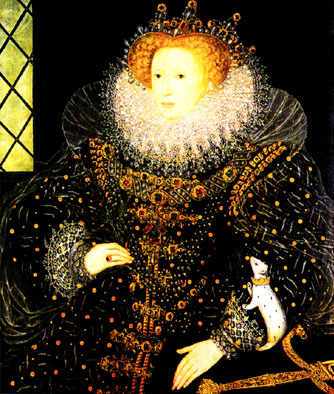Domestification
... a theme running through the biological wash, spin and dry cycles recently.
This Domestification's cut out'n'keep article features Nature's report of foxes domesticated over a 42 yr breeding programme.
They're undeniably cute,

and of course so because that's half the mechanism of their domestication. Domesticated associate animals tend to neotony (babyness), a splendid term from SJ Gould's essay converting facial proportions, such as forehead/midface/jaw ratios and eye size, into a kind of cuteness index illustrated by cartoon characters. Knowing him, SJG probably also commented on extended juvenile behaviour in domesticated associates, including playfulness, social responsiveness and curiosity.
Dogs, cats (those again) and ferrets are domesticated and neotonised versions of respective lupine, feline and mustelid antecedents- all optional or obligate carnivores, and the costliest for humans to feed.
There being no such thing as a free lunch, these companion animals must have earned their keep through a share of co-operative hunting efforts, and perhaps gotten through lean times by mimicking cute baby features and behaviours, cueing familial-type responses and eliciting care-giving by humans. It's probably fair to speculate that dogs might've gained the edge in success (numbers 'owned') because of their social forbears, pre-adapted for communication and reception. By contrast, the precursors of domestic cats and ferrets, the (feline) desert cat and the (mustelid) polecat respectively, are solitary in adulthood except during the mating season, when their social graces leave something to be desired. According to the blessed James, who should know, the hob's brutality with teeth and baculum is necessary to trigger ovulation in the jill.
Endocrine and reproductive functions in ferrets have been segregated and intervened upon even more than those of cats and dogs. 'Whole' hobs are smelly and traditionally kept in isolation as liners and studs, while castrated or vasectomised males can mix with jills in the ferret court. Jills once in season maintain oestrus for up to 6 months if not mated, and perish eventually from immunological failure. In the event that a jill isn't selected as a dam, Blessed James lays out the ferret-keeper's options that oestrus can be permanently prevented by surgical ovarohysterectomy (spaying) or temporarily delayed by hormone injection or being served by a potent but infertile vasectomised male (hoblet). An absence of vets experienced in abdominal surgery, of synthesised progesterones or hypodermic syringes means that home vasectomies for hobs were a likely practice adopted sometime between ferrets' first description (c 6th C BC) and a European dissemination via the same Roman and Norman waves which brought rabbit farming.
Ferrets and cat populations have perhaps also suffered by inter-species competition for overlapping niches as rodent hunters. Cats, adapted to pest control for the domestic setting, have capitalised on urbanisation better than ferrets, specialised for flushing rabbits, could manage. The esteemed ferret expert James McKay (Complete Guide to Ferrets) adds as another putative contributant to the rise of the feline in a decline of cat-fear with waning of the witch crazes, c 17th C.


Just so's you know cute is not what its about, future installments here on Domestification could well (but may not) include non-fuzzy organisms....
Radish
Crunchy, nippy, bitesize and blushing, but where and when did it arise?
Fermentation
Bread, beer and cheese
*inc free pullout* Naked yeasts-first domesticates?
Formication
Ever get the feeling your home, bed, skin and very insides are crawling with bugs? Well, it was true, and also an inevitability given-
human placement high in the food chain
group-based social structure
hotspots in population density
cultural microclimates from clothing, shelter and fire
proximity to herded domesticated animals
Domestification Futures
Dwarf badgers (atypically social mustelid) for pets
Decerebrate chicken meat cultures (Atwood- Oryx and Crake)
Enclosure of shoreline kelp forests (powerful convertors to biomass) for shellfish farming


<< Home